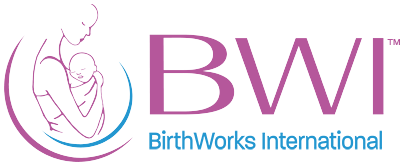- That birth is a co-operative action between the mother and baby.
- That babies try very hard to assume the best position for birth.
- That she must if possible keep her knees lower than her bottom.
- That when resting, she should lie on her left side with her legs level with her body.
- That her baby’s efforts to turn across her pubic bones will be between uncomfortable and painful.
- That she can minimize this by adopting forward leaning postures while her baby is moving.
- Wait until the baby is awake to move him. Don’t try when he is sleeping.
- That when her abdomen sags, and her back aches, it is better to wear a girdle than to tuck her tail bone under. Expect some lordosis.
- That once her baby is in the best position, the only small lump she will feel is far round between her hip bone and ribs.
- That a baby in the best position gives good signals to his mother’s body to prepare for birth. Remaining upright and mobile will aid labor.
- That this baby is likely to be born on time and proceed just as the books tell us.
- That he will come out with a minimum of effort, in as short a time as possible, and arrive peaceful, unstressed and ready to get on with life.
- That chemical pain relief is not likely to be needed as the mother’s body will respond to her baby’s signals, and she will cope magnificently.
- Back-rubbing techniques, perineal massage, etc. actually get in the way of the mother developing her own labor rhythm and entering into the detached endorphin state. Use of water tubs or birth pools may reduce the amount of pain, but unless the mother is able to assume a forward leaning position, these will do nothing to shorten the labor. Breathing exercises are yet another “survival” technique. That early labor will have a heightened sense of excitement, the talkative phase as things settle into a rhythm, and more abstracted state as contractions become established.




